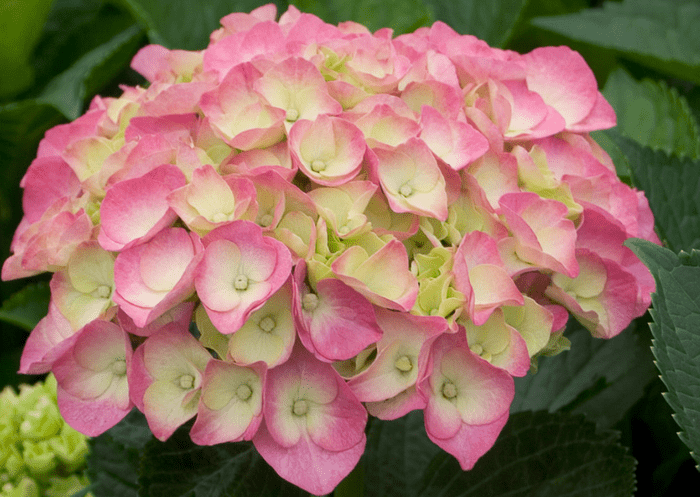
Bigleaf Hydrangea
Hydrangea macrophylla
Bigleaf hydrangeas are the type that most people gravitate to, especially cultivars with pink flowers (seen in soils with high pH) or blue flowers (soils with low pH). However, bigleaf hydrangeas wilt quickly if the soil dries out in summer, and they may not flower reliably in colder growing zones.
Longtime southern favorites, bigleaf hydrangeas are now available in reblooming varieties, giving gardeners in the north a chance to enjoy them. If you’re looking for a smaller plant, try Mini Penny.
Learn when to prune your hydrangeas for big blooms.
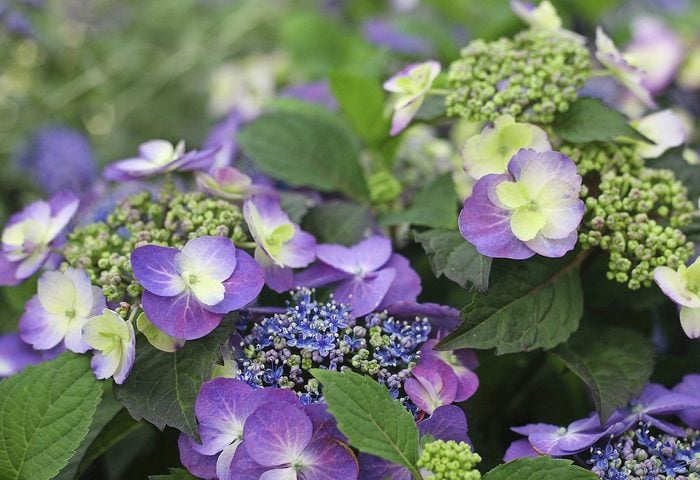
Mountain Hydrangea
H. serrata
While hydrangeas are known for long-lasting blooms, work is being done to encourage reblooming among bigleaf and mountain hydrangea types. The Tuff Stuff mountain hydrangea is a reblooming type. It flowers in spring on old wood and again on new wood, so you can enjoy blooms until frost.
“Our newest variety is Tuff Stuff Ah-Ha mountain hydrangea,” Natalie says. “It’s a strong rebloomer, with huge waterlily-like double florets that are blue or pink depending on the soil.”
Discover the best hydrangea bush for every yard and growing condition.
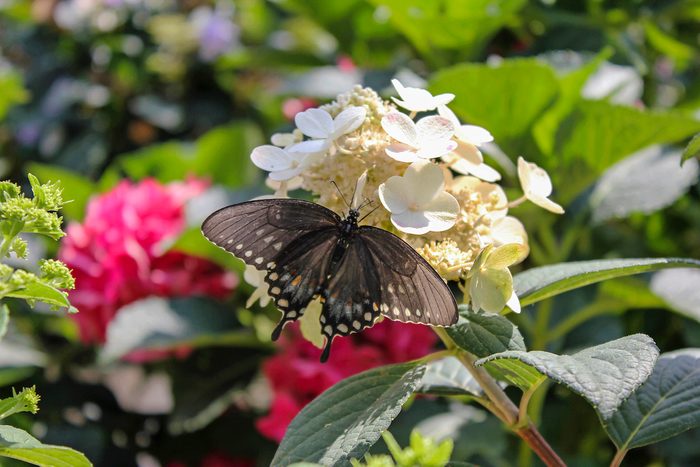
Panicle Hydrangea
H. paniculata
Panicle hydrangeas are a good alternative to bigleaf hydrangea types for many gardeners. “If you have lots of sun and need a drought-tolerant plant, you’ll find that panicle hydrangeas fare better than other hydrangea types,” Natalie says. “They are also reliable bloomers that flower on new wood, making them a low-maintenance option for Zone 3 gardens.”
Natalie recommends Fire Light, which is packed with florets that transform from pure white to pink and then finish a pomegranate red. Little Quick Fire panicle hydrangea blooms a month earlier than others. Limelight and the smaller Little Lime are the most adaptable to any climate, thriving where others might struggle.
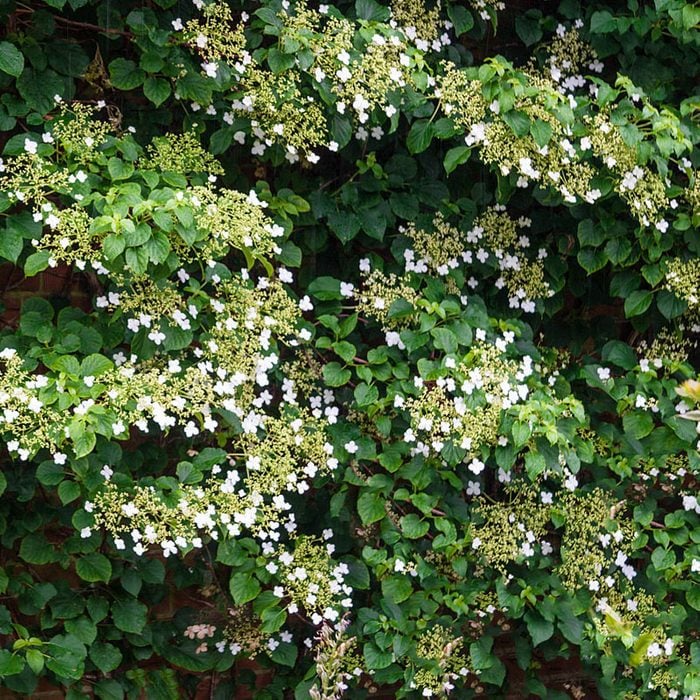
Climbing Hydrangea
H. petiolaris
Use climbing hydrangeas to cover buildings, fences or arbors. Keep in mind these plants can take a long time to get established and start flowering. Water them thoroughly as needed and avoid high-nitrogen, fast-release fertilizers that encourage stem growth but discourage flowering.
Discover 6 hydrangea facts that even expert gardeners don’t know.
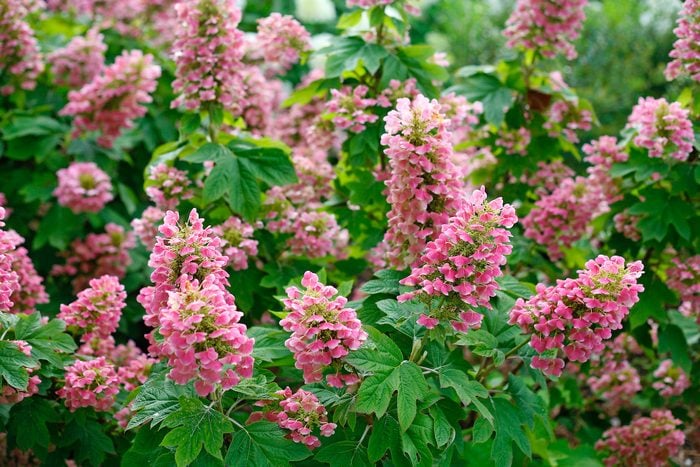
Oakleaf Hydrangea
H. quercifolia
All hydrangeas need some sunlight for best flowering, ideally in the morning, but oakleaf hydrangeas tolerate more shade than others. However, oakleaf hydrangeas typically don’t do as well with temperature extremes, preferring the midrange zones. Gatsby Pink oakleaf hydrangea is a native grown for fall color.
Hydrangea not blooming? Here’s what to do.
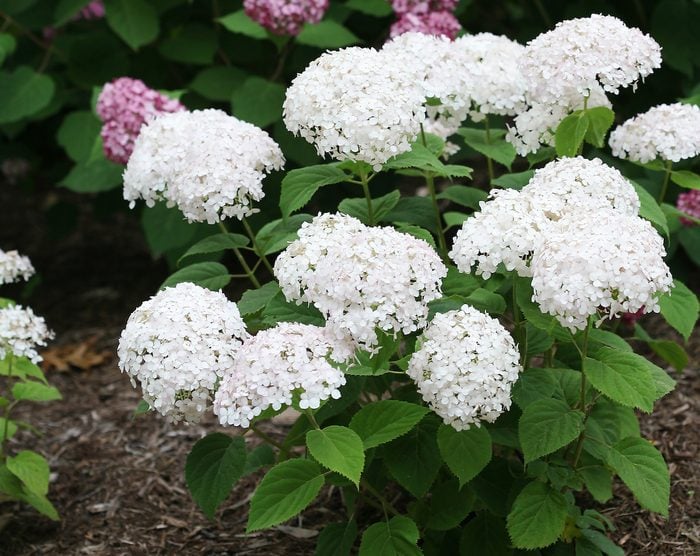
Smooth Hydrangea
H. arborescens
“Smooth hydrangeas are incredibly easy to grow,” Natalie says. “They are super cold hardy down to USDA Zone 3.” One of her favorites is the line of Incrediball hydrangeas. “If you are familiar with the classic white Annabelle hydrangea, you’ll love Incrediball hydrangea,” she says. “It has massive white blooms held up on sturdy stems, so they don’t flop over.”
Or try Invincibelle Wee White smooth hydrangea, which blooms for months. “Wee White is a huge game changer because of its diminutive size,” Natalie says. “Topping out at just 2½ feet, this is an ideal hydrangea for use in containers and small gardens.”
Smooth hydrangeas are also available in a variety of colors. Incrediball Blush is silvery pink; the Invincibelle series boasts pink, ruby and mauve hues; and Lime Rickey shines with deep green flowers.
Next, learn how to change the color of your hydrangeas.
